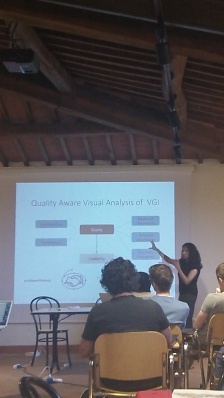A review of volunteered geographic information quality assessment methods
One of the joys of academic life is the opportunity to participate in summer schools – you get a group of researchers, from PhD students to experienced professors, to a nice place in the Italian countryside, and for a week the group focuses on a topic – discussing, demonstrating and trying it out. The Vespucci Institute in 2014 that was dedicated to citizen science and Volunteered Geographic Information (VGI) is an example for that. Such activities are more than a summer retreat – there are tangible academic outputs that emerge from such workshops – demonstrating that valuable work is done!
During the summer school in 2014, Hansi Senaratne suggested to write a review of VGI data quality approaches, and together with Amin Mobasheri and Ahmed Loai Ali (all PhD students) started to developed it. I and Cristina Capineri, as summer school organisers and the vice-chair & chair of COST ENERGIC network (respectively), gave advice to the group and helped them in developing a paper, aimed at one of the leading journal of Geographic Information Science (GIScience) – the International Journal of GIScience (IJGIS).

The paper went through the usual peer review process, and with a huge effort from Hansi, Amin & Ahmed, it gone all the way to publication. It is now out. The paper is titled ‘A review of volunteered geographic information quality assessment methods‘ and is accessible through the journal’s website. The abstract is provided below, if you want a copy – please email me.
With the ubiquity of advanced web technologies and location-sensing hand held devices, citizens regardless of their knowledge or expertise, are able to produce spatial information. This phenomenon is known as volunteered geographic information (VGI). During the past decade VGI has been used as a data source supporting a wide range of services, such as environmental monitoring, events reporting, human movement analysis, disaster management, etc. However, these volunteer-contributed data also come with varying quality. Reasons for this are: data is produced by heterogeneous contributors, using various technologies and tools, having different level of details and precision, serving heterogeneous purposes, and a lack of gatekeepers. Crowd-sourcing, social, and geographic approaches have been proposed and later followed to develop appropriate methods to assess the quality measures and indicators of VGI. In this article, we review various quality measures and indicators for selected types of VGI and existing quality assessment methods. As an outcome, the article presents a classification of VGI with current methods utilized to assess the quality of selected types of VGI. Through these findings, we introduce data mining as an additional approach for quality handling in VGI
